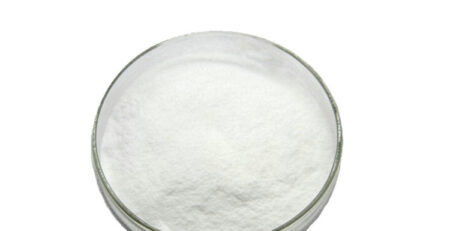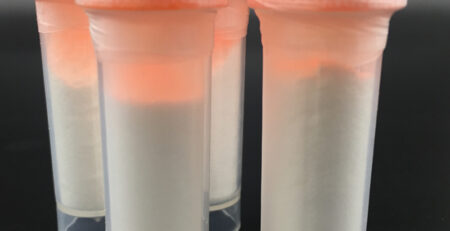Androgen receptor (“AR”) is a ligand-activated transcriptional regulatory protein that mediates the induction of male sexual development and function through its endogenous androgen activity. Androgens are often called male sex hormones. Androgens are produced in the body by the testes and adrenal cortex, or steroids that can be synthesized in the laboratory. Androgen steroids play an important role in many physiological processes, including male sexual characteristics such as the development and maintenance of muscle and bone mass, prostate growth, spermatogenesis, and male hair distribution (Matsumoto, Endocnnol. Met. Clin. N. Am. 23857- 75 (1994)). Endogenous steroid androgens include testosterone and dihydrotestosterone (“DHT”). Testosterone is the main steroid secreted by the testes and is the main circulating androgen found in the serum of men. In many peripheral tissues, testosterone is converted to DHT by the enzyme 5α-reductase. It is therefore believed that for most androgenic effects, DHT acts as an intracellular medium (Zhou et al., Molec. Endocrinol. 9208-18 (1995)). Other steroidal androgens include esters of testosterone such as cyclopropionate, propionate, phenylpropionate, cyclopentylpropionate, isocarporate, enanthate and caprate, and other synthetic androgens such as 7-methylnortestosterone (“MENT”) and its acetate (Sundaram et al., “7 Alpha-Methyl-Nortestosterone (MENT) The Optimal Androgen For Male Contraception,” Ann. Med, 25199-205 (1993) (“Sundaram”)). Because AR is involved in male sexual development and function, AR is likely to be a target for male contraception or other forms of hormone replacement therapy.
The BMD (Bone Mineral Density) of both men and women decreases with age. The decrease in bone mineral content (BMC) and BMD is related to the decrease in bone strength, making patients prone to fractures.
Osteoporosis is a systemic skeletal disease characterized by low bone mass and degeneration of bone tissue, which results in increased bone fragility and easy fracture. In the United States, more than 25 million people suffer from the condition, causing more than 1.3 million fractures each year, including 500,000 spine fractures, 250,000 hip fractures, and 240,000 wrist fractures each year. Hip fractures are the most serious consequence of osteoporosis, causing 5-20% of individuals to die each year and more than 50% of survivors disabled. The elderly are at greatest risk of osteoporosis, so it is expected that the problem will become more serious as the population ages. The incidence of fractures worldwide is expected to triple in the next 60 years, and a study estimates that there will be 4.5 million hip fractures worldwide in 2050.
Women have a greater risk of osteoporosis than men. Women’s bone loss accelerated significantly within 5 years after menopause. Other factors that increase this risk include smoking, alcohol abuse, a sedentary lifestyle and low calcium intake. However, men also often develop osteoporosis. It has been clearly determined that male bone mineral density decreases with age. The reduction of bone mineral content and density is related to the reduction of bone strength and is prone to fracture. The molecular mechanism of the pleiotropic effect of sex hormones in non-reproductive tissues is just beginning to be understood, but it is clear that the physiological concentrations of androgens and estrogens play an important role in maintaining bone homeostasis throughout the life cycle. Therefore, when androgen or estrogen loss occurs, the result is an increase in the rate of bone remodeling, tilting the balance of absorption and formation to facilitate absorption, which results in a loss of overall bone mass. In men, the natural reduction of mature sex hormones (direct reduction of androgens and lower levels of androgen-derived estrogen derived from androgens) is associated with bone fragility. This effect was also observed in castrated men.
Muscle wasting refers to the progressive loss of muscle mass and / or muscles, including the skeletal or voluntary muscles that control movement, the myocardium (cardiomyopathy) that controls the heart, and the progressive weakness and degeneration of smooth muscle. Chronic muscle wasting is a chronic condition (that lasts for a long time), which is characterized by a progressive loss of muscle mass, muscle weakness and degeneration.
The loss of muscle mass that occurs during muscular wasting can be characterized by muscle protein breakdown and degradation. The cause of protein breakdown is an unusually high rate of protein degradation, an unusually low rate of protein synthesis, or a combination of both. Muscle protein degradation, whether it is caused by a high degree of protein degradation or a low degree of protein synthesis, leads to a decrease in muscle mass and leads to muscle wasting.
Muscle wasting disease is associated with chronic, neurological, hereditary or infectious pathologies, diseases, pains or conditions. These include muscular dystrophy, such as Duchenne’s muscular dystrophy and myotonic dystrophy; muscle atrophy, such as post-polio muscular atrophy (PPMA); cachexia, such as cardiac cachexia, AIDS cachexia, and cancer cachexia, malnutrition, Leprosy, diabetes, kidney disease, chronic obstructive pulmonary disease (COPD), cancer, end-stage renal failure, sarcopenia, emphysema, osteomalacia, HIV infection, AIDS, and cardiomyopathy.
In addition, other environments and conditions are related to muscle wasting and can lead to muscle wasting. These include chronic lower back pain, advanced age, central nervous system (CNS) injury, peripheral nerve injury, spinal cord injury, chemical injury, central nervous system (CNS) injury, peripheral nerve injury, spinal cord injury, chemical injury, burns, pain due to illness Or injury leads to limbs fixation, disuse deconditioning during long-term hospitalization, and alcoholism.
The complete androgen receptor (AR) signaling pathway plays a key role in the proper development of skeletal muscle. Moreover, a complete AR-signaling pathway increases muscle leanness, muscle strength, and muscle protein synthesis.
Muscular wasting disease, if not weakened, may have terrible health consequences. For example, changes that occur during muscular wasting can lead to a weakened physical condition, which is detrimental to the health of the individual, leading to increased susceptibility to infection and poor behavior. In addition, muscle wasting is a strong predictor of morbidity and mortality in patients with cachexia and AIDS.
Both the basic scientific level and the clinical level urgently need a pioneering method to prevent and treat osteoporosis and other bone-related disorders and muscle wasting, especially chronic muscle wasting. The present invention meets this need.
05 Apr



